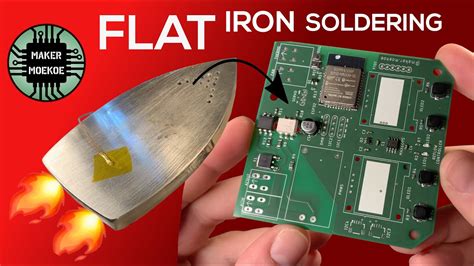Introduction
Soldering is an essential skill for anyone interested in electronics, whether you’re a hobbyist or a professional. A solder iron is a crucial tool for this task, but purchasing a high-quality one can be expensive. Fortunately, with a little creativity and some basic materials, you can make your own DIY Solder Iron at home. In this comprehensive guide, we’ll walk you through the steps to create your own homemade solder iron, discuss the benefits of doing so, and answer some frequently asked questions.
Why Make Your Own Solder Iron?
There are several reasons why you might want to consider making your own solder iron:
-
Cost savings: Commercial solder irons can be expensive, especially if you’re just starting out or only need one for occasional use. Making your own can save you money.
-
Customization: By building your own solder iron, you can tailor it to your specific needs and preferences, such as the size of the tip or the length of the handle.
-
Learning experience: Creating your own tools is a great way to learn more about how they work and gain a deeper understanding of the soldering process.
Materials Needed
To make your own DIY solder iron, you’ll need the following materials:
| Material | Quantity |
|---|---|
| Copper pipe | 1 piece, 6-8 inches long |
| Nichrome wire | 1 piece, 2-3 feet long |
| Ceramic insulator | 1 piece |
| Wooden handle | 1 piece |
| Power cord with plug | 1 piece |
| Nuts and bolts | 2-3 sets |
| Electrical tape | 1 roll |
| Solder | 1 roll |
| Sandpaper | 1 sheet |

Tools Required
In addition to the materials listed above, you’ll need the following tools:
- Hacksaw or pipe cutter
- Drill with various bits
- Pliers
- Wire strippers
- Screwdriver
Step-by-Step Guide
Step 1: Prepare the Copper Pipe
- Cut the copper pipe to your desired length (6-8 inches is recommended) using a hacksaw or pipe cutter.
- Sand the inside and outside of the pipe to remove any burrs or rough edges.
- Drill a small hole near one end of the pipe, large enough to accommodate the nichrome wire.
Step 2: Create the Heating Element
- Cut a piece of nichrome wire to your desired length (2-3 feet is recommended).
- Thread the nichrome wire through the hole in the copper pipe, leaving equal lengths on either side.
- Twist the ends of the nichrome wire together to secure it in place.
Step 3: Attach the Ceramic Insulator
- Place the ceramic insulator over the nichrome wire, positioning it in the center of the copper pipe.
- Secure the insulator in place using electrical tape.
Step 4: Attach the Wooden Handle
- Drill a hole in the wooden handle large enough to accommodate the copper pipe.
- Insert the copper pipe into the hole, ensuring a snug fit.
- Secure the pipe in place using nuts and bolts.
Step 5: Connect the Power Cord
- Strip the ends of the power cord wires using wire strippers.
- Wrap one wire around each end of the nichrome wire, securing them with electrical tape.
- Plug in the power cord to test your new DIY solder iron.
Tips and Tricks
- Use a Variable Power Supply to control the temperature of your solder iron for optimal results.
- Experiment with different tip shapes and sizes to find the one that works best for your soldering needs.
- Keep your solder iron clean by wiping the tip with a damp sponge or cloth between uses.
- Always unplug your solder iron and allow it to cool completely before storing it.
Frequently Asked Questions (FAQ)
1. Is it safe to make my own solder iron?
While it is generally safe to make your own solder iron, it’s essential to follow proper safety precautions. Always wear protective gear, such as gloves and safety glasses, and work in a well-ventilated area. Make sure to unplug your solder iron when not in use and allow it to cool completely before storing it.
2. Can I use any type of wire for the heating element?
Nichrome wire is recommended for the heating element due to its high resistance and ability to withstand high temperatures. Other types of wire may not be suitable and could pose a safety risk.
3. How long will a homemade solder iron last?
The lifespan of your DIY solder iron will depend on the quality of the materials used and how well you maintain it. With proper care and storage, a homemade solder iron can last for several years.
4. Can I use my DIY solder iron for professional work?
While a homemade solder iron can be suitable for hobbyist projects and occasional use, it may not be ideal for professional work. Commercial solder irons are designed to meet specific industry standards and may offer features that are not possible with a DIY version.
5. What should I do if my DIY solder iron stops working?
If your homemade solder iron stops working, first check to ensure that the power cord is securely connected and that there are no breaks in the nichrome wire. If the issue persists, you may need to replace the heating element or other components. Always unplug your solder iron before attempting any repairs.
Conclusion
Creating your own DIY solder iron can be a fun and rewarding project for anyone interested in electronics. By following the steps outlined in this guide and using the proper materials and tools, you can build a functional and customized solder iron that meets your specific needs. Remember to always prioritize safety and maintain your homemade solder iron for optimal performance and longevity. Happy soldering!






Leave a Reply